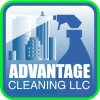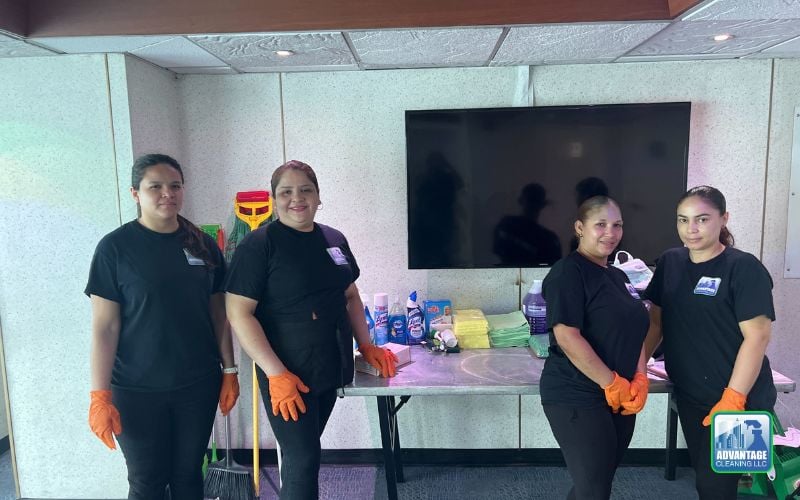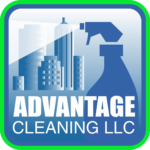Spring in New York City marks a critical opportunity for facility managers to refresh their office environments. An expertly executed office spring cleaning checklist ensures not only visual appeal but also boosts workplace health, safety, and performance. At Advantage Cleaning LLC, our commitment to quality-first service, driven by our industry-leading Quality Control System, guarantees each task is completed to the highest standard — no corner-cutting, ever.
This comprehensive office deep cleaning guide is tailored to facility managers seeking actionable, results-focused spring cleaning tips to elevate their office building and meet professional standards of cleanliness and care.
For a day-to-day office cleaning guide, please see our general office cleaning checklist or visit our New York Office Cleaning Services for more detail.
Spring Cleaning for NYC Office Spaces
Spring cleaning isn’t just a seasonal ritual — it’s essential for workplace health, employee satisfaction, and brand perception. In high-traffic buildings, especially in urban hubs like Manhattan, Brooklyn, Bronx, and Queens, dust, grime, and allergens accumulate quickly. A deep clean ensures that your office space looks great and supports a healthy workplace for staff and visitors. Additionally, emptying recycling bins alongside trash cans as part of regular cleaning tasks is crucial for maintaining an organized and sustainable office environment.

Office Spring Cleaning, Where Should You Start?
To ensure a smooth and efficient office spring cleaning process, it’s important to follow a logical sequence:
- Decluttering and organizing should come first. Removing unnecessary items, including sorting and managing office supplies, clears the way for thorough cleaning.
- High dusting should always be done before low dusting or floor work to prevent re-contamination.
- Start at the top — ceilings, vents, light fixtures — then move down to walls, desks, cabinets, and floors.
- Clean dry areas first (offices, conference rooms, lobbies) and wet areas last (kitchens, restrooms) to prevent spreading moisture or germs.
- Disinfect high-touch points last, after all surfaces are cleaned, to lock in sanitation.
- Use separate tools and cloths for restrooms and food prep areas to avoid cross-contamination.
Following this order, along with Advantage Cleaning’s Quality Control checks, ensures your team cleans smarter — not harder.
Cleaning Principles for a Higher Grade of Quality
At Advantage Cleaning, our methods are guided by professional-grade cleaning science and safety protocols:
- Clean high before cleaning low: Always start with ceilings, vents, and shelves before wiping desks or mopping floors. After vacuuming, mop floors in high-traffic areas to ensure dirt and contaminants are effectively removed, promoting a hygienic environment.
- Avoid cross-contamination: Use color-coded cloths and mops — one set for restrooms, another for kitchens, and another for general areas. Never reuse the same tools across different zones.
- Use the right product for the right surface: Always use pH-neutral or surface-safe products for delicate areas like marble, wood, or electronics.
- Allow for proper dwell time: EPA-approved disinfectants require specific contact time to kill viruses and bacteria effectively. Don’t wipe too soon.
- Ventilation matters: Open windows or run HVAC fans when applying stronger cleaners to reduce indoor air quality issues.
- Documentation and verification: Each cleaning cycle should include logging, auditing, and follow-up reporting.
These principles are part of our every-day training and embedded in our digital Quality Control System, ensuring consistent, professional results across every square foot. This comprehensive guide is tailored to NYC facility managers seeking actionable, results-focused spring cleaning tips to elevate their office space and meet professional standards of cleanliness and care.
How Often Should You Do Office Deep Cleaning?
The frequency of spring cleaning, or office deep cleaning, depends on factors like office size, foot traffic, industry, and specific health standards. However, here are general guidelines we recommend for New York City businesses:
- Quarterly Deep Cleaning: Ideal for most office environments to maintain sanitation and visual quality throughout the year. This includes carpets, floors, high dusting, restroom detailing, and organizing storage spaces to enhance cleanliness and productivity.
- Monthly Touch-Up Services: For high-traffic common areas like lobbies, restrooms, elevators, and break rooms, monthly mini deep cleans keep things fresh between quarterly deep cleans.
- Weekly or Bi-Weekly High-Touch Disinfection: Essential during flu season or high-illness periods. Door handles, phones, copier panels, and communal areas should be disinfected regularly.
- Daily General Cleaning: For garbage removal, basic dusting, restocking supplies, and floor vacuuming/mopping, depending on traffic.
Remember: A deep clean is more than just surface-level general office cleaning. It involves moving furniture, detailed disinfection, specialty equipment use, and certified technicians. Scheduling with a professional provider ensures consistency and compliance.
Office Pre-Cleaning Preparation
Before starting your spring cleaning project, set the foundation:
- Conduct a pre-cleaning walkthrough to identify focus areas and assign responsibility.
- Identify high-touch points—these include light switches, elevator buttons, door handles, copier control panels, refrigerator handles, microwave buttons, water coolers, faucet knobs, drawer pulls, and shared workspace surfaces. These areas are highly susceptible to germ transfer and must be disinfected multiple times during a cleaning cycle.
- Schedule cleaning during low-occupancy hours to minimize disruption and ensure safety.
- Take inventory of eco-friendly cleaning supplies that meet EPA standards and reduce exposure to harmful chemicals.
How To Do Office Spring Cleaning Step-by-Step
Lobby & Reception Area Deep Cleaning
The lobby is your company’s handshake. It must reflect professionalism and cleanliness:
- Vacuuming and shampooing carpets: Use commercial-grade extraction machines to lift embedded dirt and bacteria. Furniture should be temporarily moved to allow full access to carpeted areas.
- Glass and metal polishing: Use ammonia-free cleaners for streak-free results on windows, glass dividers, glass surfaces, and decorative panels. Stainless steel and brass fixtures must be wiped with material-specific polish.
- Marble & Metal Maintenance: We restore the elegance of natural stone and metal by using non-abrasive cleaners, soft pads, and mechanical polishers to prevent surface etching or corrosion. Ideal for floors, columns, elevator trim, and reception counters.
- Disinfect all high-touch points, including entry doors, reception desks, elevator call panels, and waiting area arms.
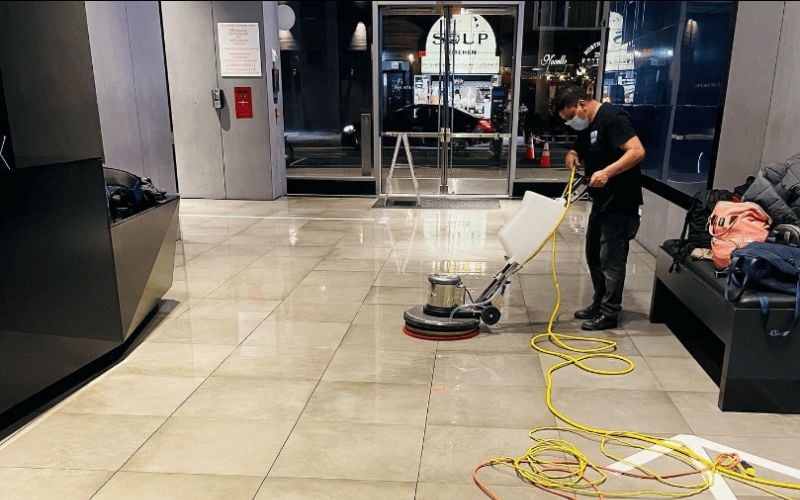
Work Areas & Open Offices
These are productivity zones that deserve precision cleaning:
- High and low dusting: Dust all light fixtures, ceiling vents, top of cabinets, monitor tops, and baseboards. This includes tops of cubicle walls and HVAC return grilles.
- Clean walls with spot treatments for scuff marks and dirt accumulation. Avoid abrasive pads to protect paint.
- Disinfect all high-touch points such as desk surfaces, drawer handles, keyboards, phones, chair arms, and light switches using CDC-approved disinfectants.
- Cabinet cleaning: Empty cabinets, disinfect interiors, and move freestanding cabinets to clean behind and underneath. Dust and debris often collect in these hidden zones. Organizing office supplies within these cabinets is crucial for maintaining a decluttered and efficient workspace.
- Vacuum carpets using HEPA filter vacuums to trap fine dust and allergens. Mop hard floors using microfiber pads and low-residue eco solutions to prevent slip hazards.
- Move copiers and printers if possible to vacuum and mop under and behind the equipment. Clean and disinfect all control buttons and touch panels.

Conference Rooms
This space influences external partners and internal collaboration:
- Wipe and disinfect tables, including the undersides, chair arms, and remote controls.
- Clean AV equipment: Use anti-static cloths and disinfecting wipes approved for electronics.
- Vacuum and mop under all furniture, including under conference tables and AV carts.
- Clean glass boards, windows, and wall-mounted screens. Dust or clean behind mounted artwork and display frames to remove cobwebs and allergens.
Window Cleaning (Interior & Exterior)
Let the light in with clarity:
- Interior window cleaning: Use lint-free cloths to remove film from heating systems and building grime.
- Exterior window cleaning: Requires certified techs using squeegees, lifts, or water-fed poles for multi-story buildings.
- Clean window sills, blinds, and curtains: Use vacuum brush attachments and microfiber cloths. Dust and allergens gather in fabric folds and louvers.
- Clean any interior glass partitions and sidelights.
Learn more about our New York Commercial Office Cleaning Services
Break Rooms & Kitchens
Clean kitchens reduce illness risk and improve morale:
- Deep clean sinks, backsplashes, and countertops with degreasers and EPA-safe disinfectants.
- Sanitize appliances: Remove internal trays from microwaves and refrigerators, clean rubber door seals, and sanitize handles.
- Empty and clean cabinet interiors; wipe down exterior handles and doors. Move portable cabinets to clean underneath.
- Disassemble coffee machines and vending units: Wipe down all components, including drip trays.
- Mop with eco friendly degreasers. Use signage during drying to prevent slips.

Restroom Deep Cleaning
Our restroom deep cleaning protocol leaves nothing untouched:
- Sanitize and descale all sinks, faucet handles, and soap dispensers: Begin by applying a descaling agent to eliminate lime and calcium buildup. Use microfiber cloths and EPA-registered disinfectants to clean faucet levers and pump dispensers, which are high-touch points used multiple times a day.
- Clean and sanitize bathroom stalls and commodes: Disinfect all stall door handles, locks, partitions, and toilet seats using CDC-recommended cleaning agents. Pay special attention to the base of the toilet and surrounding grout lines, which can harbor hidden bacteria.
- Clean and sanitize showers (if applicable): Remove any residue or soap scum using non-abrasive cleaners. Disinfect floor surfaces, walls, shower curtains, and fixtures. Pay attention to drain areas and corners where biofilm can build up.
- Grout line scrubbing and sealing: Use grout-safe rotary brushes or detail tools with an enzymatic or oxygenated cleaner. After drying, apply a professional-grade grout sealer to lock out future moisture and prevent mold regrowth.
- Polish mirrors and chrome fixtures: Use ammonia-free glass cleaner for streak-free clarity and a chrome polish for taps, flush handles, and piping to maintain a like-new finish.
- Refill sanitary bins, paper goods, and soap stations: Use Green Seal-certified products to ensure environmentally responsible practices. Check and top off toilet paper, paper towels, and hands-free soap dispensers.
- Check for mold and mildew: Inspect the ceiling corners, around vents, behind toilets, under sinks, inside grout lines, and along caulked edges. If discovered, isolate the area, apply EPA-registered mold remediation products, and consider ventilation or plumbing inspection to resolve root causes.
Explore our Disinfection Cleaning Services & Deep cleaning services for New York City
Air Quality Maintenance
Breathable air is a productivity driver:
- Replace HVAC filters with MERV-rated equivalents.
- Wipe and vacuum air vents and ceiling diffusers. High dusting ensures fine dust doesn’t resettle.
- Use odor-neutralizing sprays approved by EPA Safer Choice program.
Floor Care & Hard Floor Treatments
Floors must shine under foot traffic—and they must be cleaned using methods appropriate to the material. Different floor types require tailored techniques, tools, and products to maintain both their beauty and durability. Using the wrong method can dull finishes, cause warping or staining, and lead to costly repairs. Here’s how we ensure top-quality care by floor type:
- Marble Floors: These high-end surfaces are porous and can be easily etched by acidic or abrasive cleaners. We use pH-neutral stone-safe solutions, soft pads, and mechanical polishers. For spring cleaning, we strip, clean, polish, and seal marble to enhance its natural shine while protecting against future stains and foot traffic damage.
- Hardwood Floors: Wood floors must be treated carefully to avoid water damage and streaking. Our team uses microfiber mops, low-moisture techniques, and wood-safe cleaners to preserve the floor’s finish. Avoid harsh chemicals or steamers that can compromise the wood grain or protective coating.
- Concrete Floors: Often found in industrial-style offices or basements, these require degreasers for buildup and possibly burnishing or sealing depending on the finish. We use specialty tools to scrub, polish, and if needed, re-seal the surface to protect against dusting and wear.
- Vinyl (VCT) Floors: These high-durability floors are common in corridors and breakrooms. We begin by stripping away old finish, then apply multiple coats of wax and burnish the surface for a professional gloss. This process restores both appearance and slip resistance.
- Tile Floors: Common in restrooms and kitchenettes, tiles require both surface cleaning and attention to grout lines. We use rotary scrubbers and safe acidic cleaners to lift soils, followed by sealing grout lines to prevent future mildew and stains.
- Carpets: Deep carpet cleaning involves several steps—pre-treatment, agitation, hot water extraction, and deodorizing. We use truck-mounted or portable carpet extractors with carpet-safe shampoo to lift dirt, allergens, and odors. All furniture should be moved and placed back once the carpet is dry to avoid staining and imprinting.
Each floor type demands a specific protocol. Partnering with a professional commercial cleaning company ensures your surfaces remain pristine, safe, and long-lasting.
View our New York Commercial Floor Cleaning Services

Ceiling Fans and Light Fixtures
Often ignored but essential to air quality and visual cleanliness:
- Dust blades and motor housing of ceiling fans using long-handled microfiber tools.
- Wipe and clean recessed light covers, chandeliers, and LED fixtures to remove buildup and increase brightness.
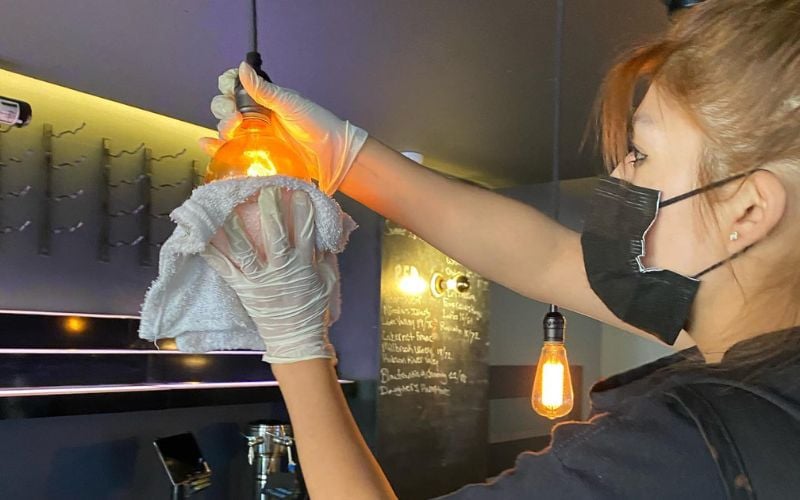
Cleaning Office Equipment & Electronics
Protect functionality while sanitizing:
- Use alcohol-based, electronics-safe wipes to clean touchscreens, control panels, and shared desk equipment.
- Dust and wipe down printers, copiers, and scanning stations, including under and behind units.
- Clean keyboards and mice using compressed air and precision swabs.
Decluttering and Organizing
A clean desk = a clear mind:
- Shred old files and digitize records.
- Wipe down and reorganize supply closets, checking for expired materials.
- Schedule a staff “desk declutter day” and offer guidance for sustainable workspace habits.
Cabinet Cleaning & High-Touch Storage
Often neglected but commonly accessed:
- Empty storage and clean all cabinet interiors and exteriors.
- Disinfect all high-touch handles, locks, and drawer pulls.
- Move freestanding units to clean behind and underneath, where dust, pests, and debris often collect.
Elevator Cleaning and Maintenance
These are hygiene hotspots with high visibility:
- Polish metal doors, trim, and interior walls to remove smudges and restore shine.
- Vacuum and mop elevator flooring, including corners.
- Sanitize button panels, rails, and touchpoints several times daily.
- Install odor-control systems for a fresh-smelling ride.

Specialized Deep Cleaning Services
For unique needs and industries:
- Post construction cleaning services include removal of dust layers, adhesive residue, and paint overspray.
- Industrial cleaning services tackle grease, chemicals, and facility-specific grime in utility or back-office zones.
- Special cleaning services: Move-in/move-out cleanings, event resets, and sensitive cleanups.
Browse our New York Special Cleaning Services
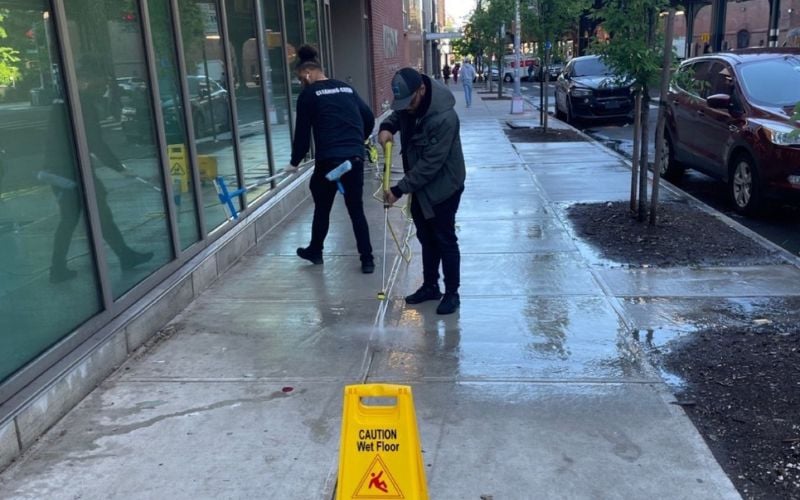
Quality Assurance: The Advantage Cleaning Way
We ensure quality with transparency:
- Each task is verified through our Quality Control System.
- Supervisors conduct mid- and post-cleaning audits.
- Reports include timestamped logs, before-and-after photos, and action resolutions.
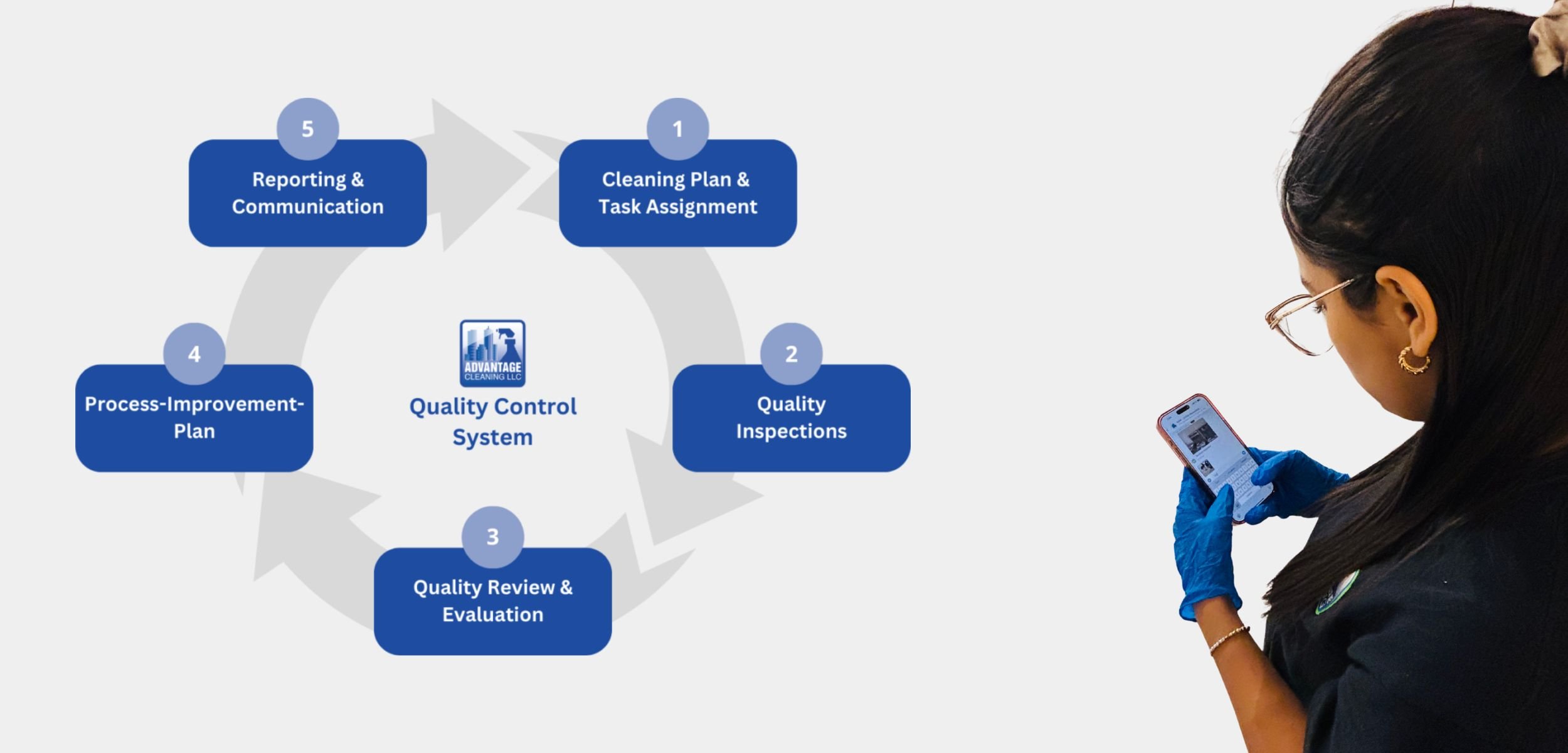
Healthy Workplace Outcomes
Healthier spaces = better performance:
- Reduced exposure to viruses and allergens improves air quality and employee focus.
- Thorough disinfection supports fewer sick days and reduced liability.
- A well-cleaned office reflects professionalism and boosts morale.
Eco-Friendly Products That Deliver
We never sacrifice performance for sustainability:
- All disinfectants are EPA-approved and effective against viruses including COVID-19.
- We prioritize Green Seal and Safer Choice certified products.
- No use of harsh chemicals like bleach unless required by code.
Scheduling and Maintenance Contracts
Keep your facility spring-fresh all year:
- Schedule recurring maintenance: monthly, quarterly, or seasonal.
- Combine with building maintenance for HVAC, plumbing, and lighting inspections.
- All visits include real-time tracking and quality control reporting.
Final Thoughts
This spring, give your office more than just a fresh start — give it a cleaner, safer, and smarter one. Our office spring cleaning checklist was built with NYC facility managers in mind, combining tactical cleaning knowledge with professional accountability. Partner with Advantage Cleaning LLC to bring a high level of quality and care to your workplace and office facilities.
This guide is proudly brought to you by Advantage Cleaning LLC, your trusted partner for professional cleaning in New York, New Jersey, and Connecticut.

A higher grade of Quality in Commercial Cleaning
Commercial Cleaning in CONNECTICUT
